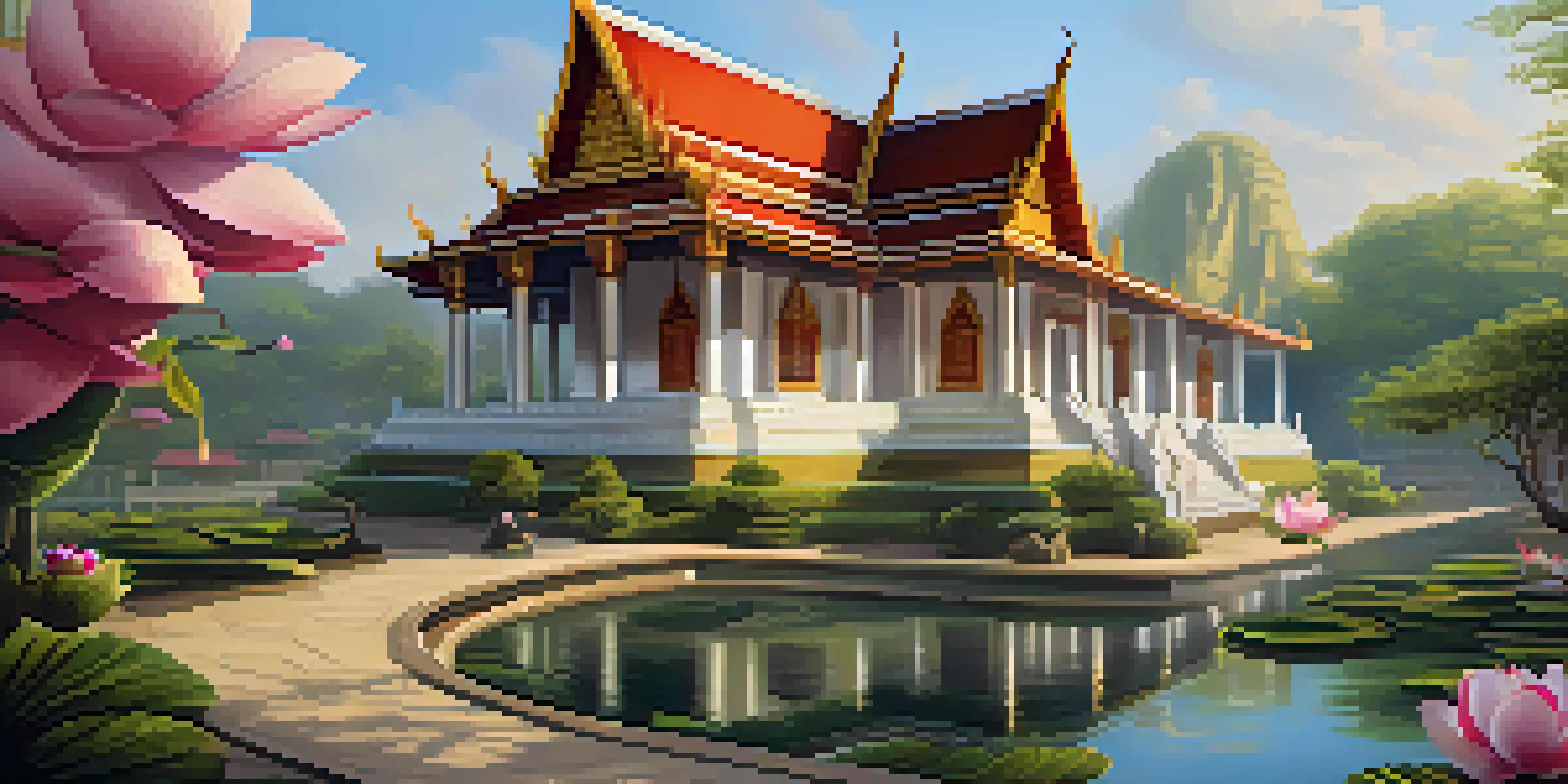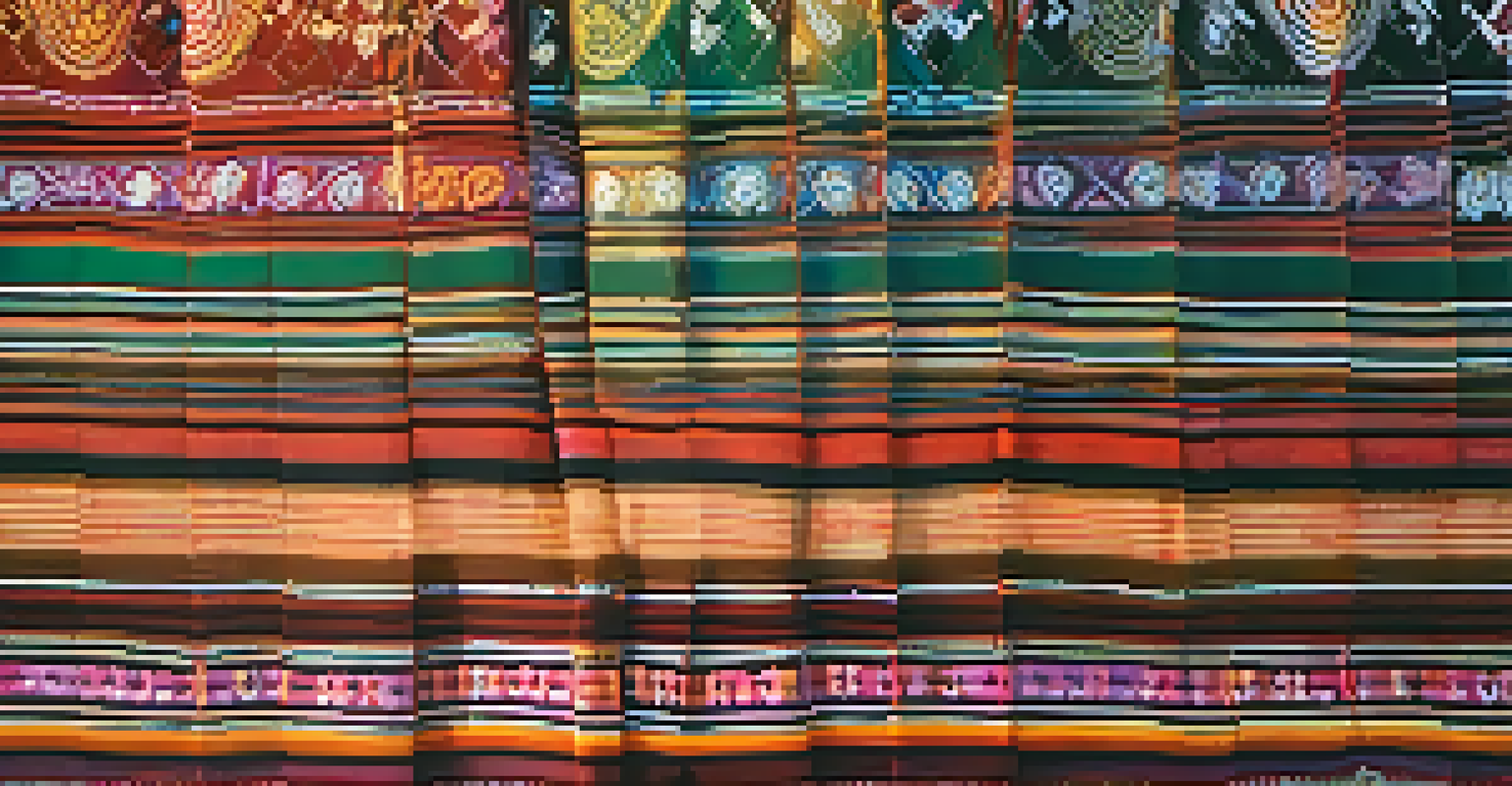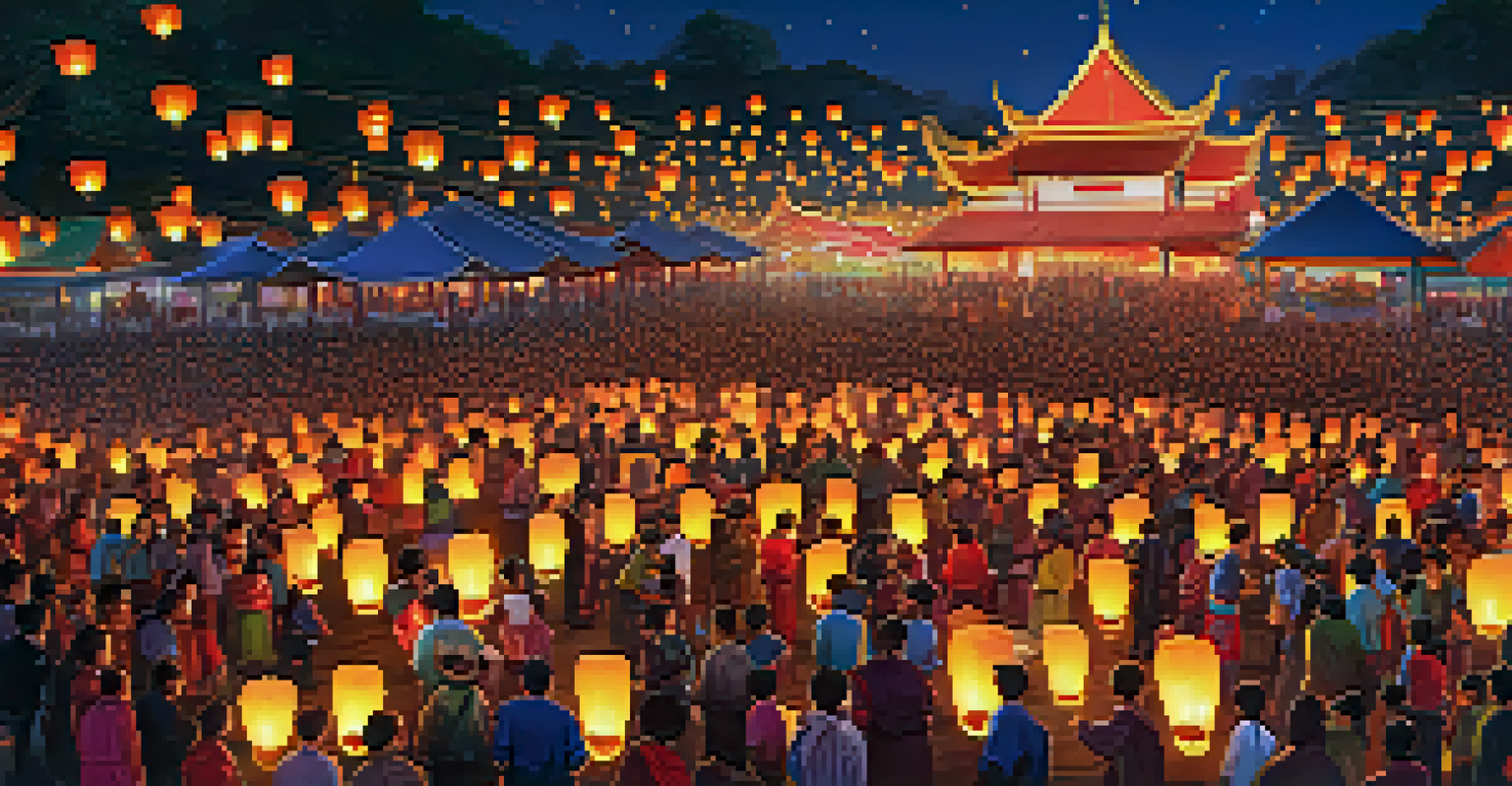The Role of Northern Thai Art in Preserving Local Traditions

Understanding Northern Thai Art and Its Significance
Northern Thai art is a vibrant expression of the region's rich cultural heritage. It encompasses various forms, including traditional painting, sculpture, and textile design, each telling a story of the local traditions and beliefs. This art form reflects the unique identity of the Northern Thai people, showcasing their history and connection to nature.
Art is the most beautiful of all lies, and the most truthful of all stories.
Art in this region is not just for decoration; it serves as a medium for storytelling, passing down knowledge and values through generations. For instance, the intricate designs on traditional textiles often carry symbolic meanings, representing everything from spiritual beliefs to daily life. Understanding this art helps us appreciate the deeper cultural narratives embedded within.
Moreover, Northern Thai art acts as a bridge between the past and the present. It allows contemporary artists to reinterpret traditional themes while keeping the essence of their heritage alive. This interplay of old and new ensures that local traditions remain relevant, fostering a sense of pride among communities.
The Influence of Buddhism on Northern Thai Art
Buddhism plays a pivotal role in shaping Northern Thai art, with its teachings influencing various artistic expressions. Temples, known as 'wats,' are adorned with stunning murals and sculptures that depict Buddhist stories and principles. These artworks not only serve as religious symbols but also as educational tools for the local population, making complex teachings accessible through visual representation.

The imagery often found in Northern Thai art, such as the serene Buddha figures and intricate lotus patterns, reflects the region's spiritual beliefs. These elements are deeply interwoven with the daily lives of the people, serving as reminders of their spiritual journey. Art becomes a way to connect with the divine, reinforcing community bonds and shared values.
Cultural Heritage Through Art
Northern Thai art embodies the region's rich cultural heritage, serving as a medium for storytelling and preserving local traditions.
Additionally, festivals and ceremonies often feature performances and artworks that celebrate Buddhist themes, further embedding these traditions in the community's fabric. This cultural continuity ensures that the teachings of Buddhism remain alive, fostering a collective identity that thrives on the principles of compassion and mindfulness.
Traditional Crafts: Weaving and Wood Carving
Traditional crafts like weaving and wood carving are at the heart of Northern Thai art, showcasing the skills passed down through generations. The process of weaving, particularly with the use of local cotton and silk, creates textiles that are not only beautiful but also functional. These fabrics often carry patterns that tell stories of the local landscape and culture, making each piece unique.
The future belongs to those who believe in the beauty of their dreams.
Wood carving, another essential craft, highlights the region's natural resources and the artisans' creativity. Intricate carvings of mythical creatures and religious motifs adorn temples and homes, serving both decorative and spiritual purposes. Each piece of carved wood reflects the artist's dedication to preserving their cultural identity while contributing to the community's aesthetic.
These crafts do more than create products; they foster a sense of belonging and continuity among the people. Workshops and community gatherings centered around these traditional practices allow for knowledge sharing and skill development, ensuring that younger generations remain connected to their roots.
Festivals as Living Expressions of Northern Thai Culture
Festivals in Northern Thailand serve as vibrant celebrations of local art and culture, showcasing the region's rich traditions. Events like the Yi Peng Lantern Festival illuminate the night sky, symbolizing hope and new beginnings. These gatherings not only bring the community together but also provide a platform for artists to display their works, reinforcing their cultural significance.
During these festivals, traditional dances, music, and art forms come alive, creating an immersive experience for both locals and visitors. The performances often incorporate elements of Northern Thai art, such as intricate costumes and elaborate stage designs, creating a captivating visual feast. This dynamic interaction between art and festivity keeps the local traditions vibrant and engaging.
Buddhism's Influence on Art
The teachings of Buddhism significantly shape Northern Thai art, with temples adorned with murals and sculptures that educate and connect the community.
Moreover, festivals encourage the preservation of ancient practices that might otherwise fade away. As younger generations participate in these celebrations, they learn the importance of their heritage, ensuring that the stories and techniques of their ancestors continue to thrive. Such events are crucial for maintaining a living connection to the past while fostering a sense of community pride.
The Role of Contemporary Artists in Cultural Preservation
Contemporary artists in Northern Thailand are playing a vital role in preserving and revitalizing local traditions. By blending traditional techniques with modern concepts, these artists create works that resonate with both local and global audiences. This fusion not only celebrates their heritage but also brings it into contemporary conversations, ensuring its relevance in today's world.
For instance, some artists incorporate traditional motifs into modern installations or multimedia projects, challenging the boundaries of what Northern Thai art can be. This innovative approach encourages dialogue about cultural identity and encourages younger artists to explore their roots while embracing new ideas. It’s a powerful reminder that tradition is not static but can evolve with time.
Additionally, contemporary art initiatives, such as exhibitions and workshops, help educate the public about Northern Thai art's significance. By engaging with the community, these artists foster appreciation for their cultural heritage, inspiring others to take part in its preservation. This synergy between tradition and modernity is crucial for keeping local customs alive and thriving.
Challenges Facing Northern Thai Art Today
While Northern Thai art plays a crucial role in cultural preservation, it faces several challenges in the modern world. Globalization, for instance, poses a threat to traditional practices as contemporary influences often overshadow local customs. As the younger generation becomes increasingly exposed to global trends, there is a risk that the unique identity of Northern Thai art may diminish.
Additionally, the decline in traditional craftsmanship due to urbanization and industrialization is concerning. Many artisans are struggling to maintain their livelihoods as demand for handmade goods decreases in favor of mass-produced alternatives. This shift not only threatens the survival of these crafts but also the rich stories and skills associated with them.
Challenges and Future Prospects
While facing challenges from globalization and urbanization, efforts are underway to preserve Northern Thai art and its cultural significance for future generations.
However, awareness is growing about the importance of preserving these traditions. Efforts by local communities, artists, and cultural organizations aim to revitalize interest in Northern Thai art. By promoting educational initiatives and supporting local artisans, there is hope for a renewed appreciation of the cultural heritage that defines this region.
The Future of Northern Thai Art and Cultural Heritage
Looking ahead, the future of Northern Thai art and cultural heritage hinges on the balance between tradition and innovation. As communities continue to embrace their roots, there is an opportunity for artists to create works that reflect both their heritage and contemporary influences. This approach not only keeps traditions alive but also attracts a broader audience, fostering a deeper understanding of Northern Thai culture.
Education will play a pivotal role in ensuring that future generations appreciate their cultural heritage. By integrating traditional arts into school curriculums and community programs, young people can gain hands-on experiences that instill a sense of pride in their identity. This proactive approach will help cultivate a new generation of artists and advocates for Northern Thai art.

Ultimately, the preservation of Northern Thai art is a collective responsibility. It requires collaboration between artists, community members, and cultural organizations to champion local traditions. Together, they can ensure that the vibrant stories and practices of Northern Thailand continue to thrive for years to come, enriching not only their own lives but those of future generations.